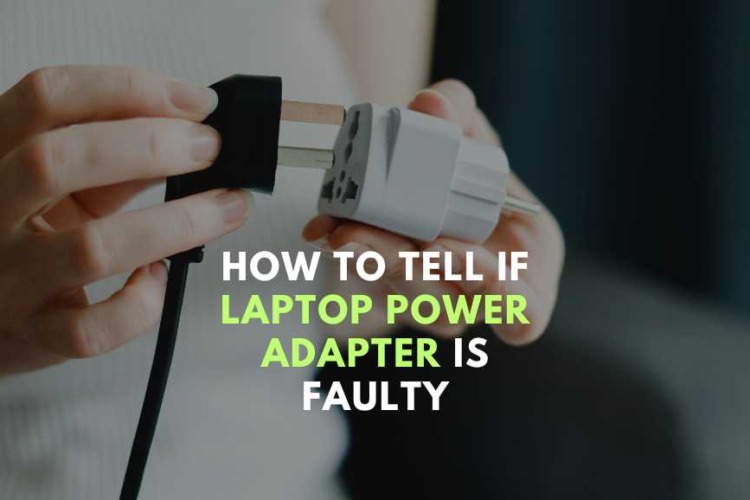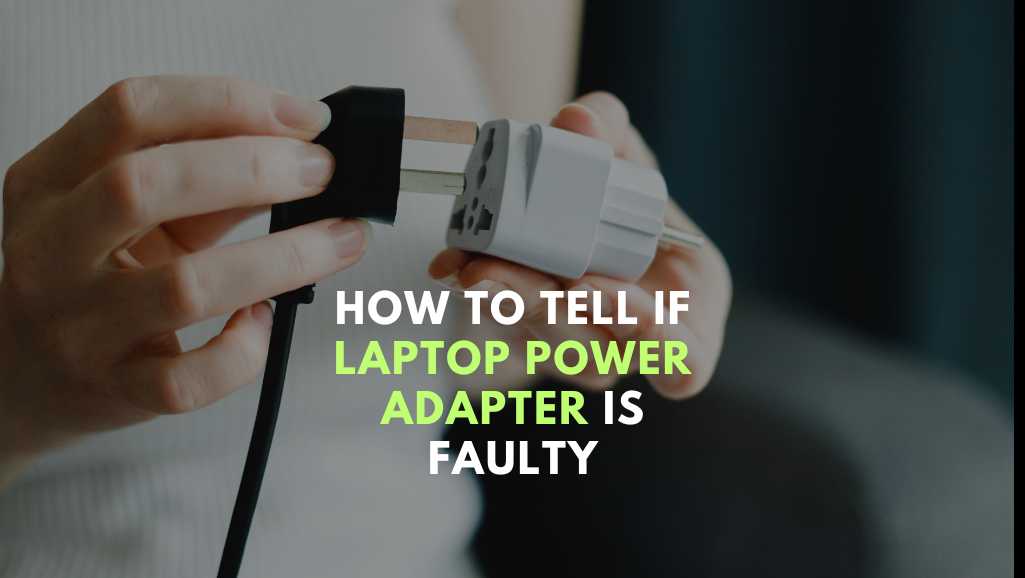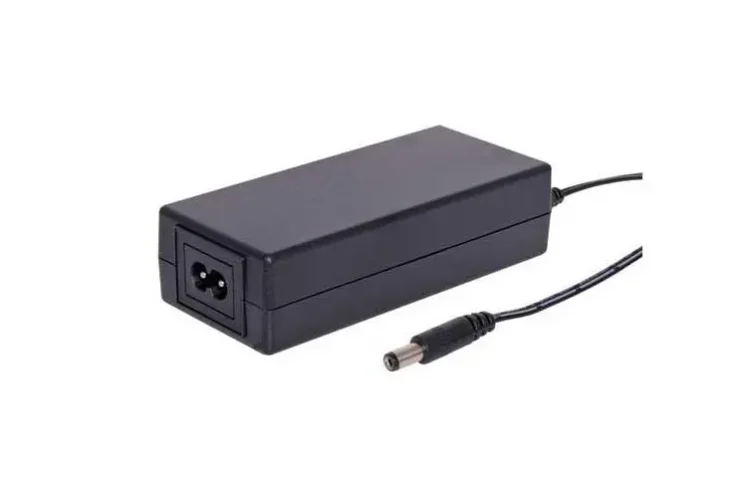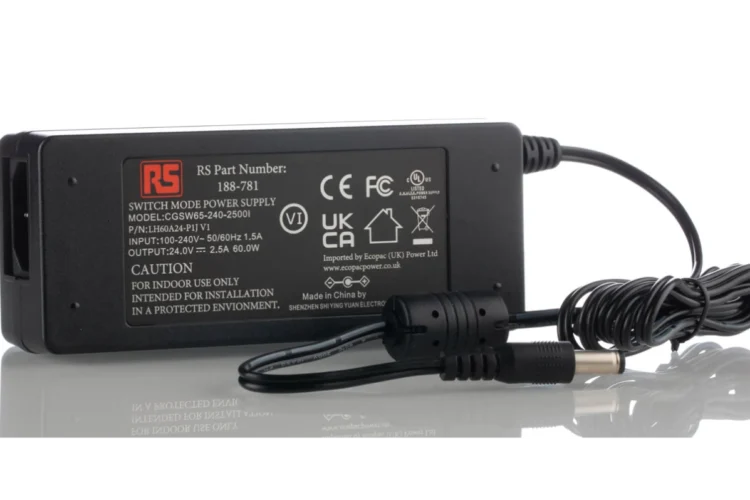
How to Tell if Laptop Power Adapter Is Faulty: An Ultimate Guide
Welcome to our comprehensive guide on identifying and resolving issues with your laptop power adapter. In today’s digitally driven world, laptops are indispensable in our

Welcome to our comprehensive guide on identifying and resolving issues with your laptop power adapter. In today’s digitally driven world, laptops are indispensable in our daily lives, serving as gateways to information, communication, and entertainment. However, the unsung hero behind every functioning laptop is its power adapter – a crucial component that often gets overlooked until problems arise.
In this guide, we delve into everything you need to know about laptop power adapters. From spotting common signs of a faulty adapter to advanced troubleshooting techniques, and from preventive measures to ensure longevity to advice on replacement and repair – especially pertinent for residents in Singapore seeking reliable laptop repair services.
Whether you are a student, a professional, or just someone who relies heavily on their laptop, understanding the ins and outs of your power adapter is key to uninterrupted productivity and entertainment. So, let’s dive in and ensure your laptop stays powered up and ready to go!
Laptop power adapters perform a vital function. They convert the AC power from your wall outlet into the DC power that your laptop uses. Additionally, they provide the correct amount of power to your laptop. This process is essential for keeping your device running and charging its battery.
Primarily, there are two types of laptop power adapters: the ‘standard’ or ‘fixed’ power adapter and the ‘universal’ or ‘adjustable’ power adapter. Each type serves the same basic function but differs in flexibility and compatibility.
Understanding the specifications of a power adapter is crucial. These include voltage, current, and power. The voltage of an adapter should exactly match your laptop’s requirement. The current output can be higher than your laptop’s rating, but never lower. The power, measured in Watts, is calculated as voltage multiplied by current (W=V*A) and should align with your laptop’s needs. Also, the connector type must fit your laptop’s power input correctly.
For instance, ASUS laptop adapters specify input and output voltages and currents, like an input of 100~240V AC and an output of 19V DC and 6.32A. The maximum power would be 120W, as indicated by the calculation 19V * 6.32A.
Connectors are another critical aspect. Common ASUS laptop AC adapter connectors include sizes like 4.0 Ø, 4.5 Ø, 5.5 Ø, 6.0 Ø, and USB Type-C. It’s imperative to use the right connector to avoid compatibility issues or damage.
For optimal performance, use the original AC adapter and power cable designed for your laptop model. Using mismatched adapters or connectors can lead to damage. Additionally, ensure the connectors of the AC adapter and laptop are free from debris like dust or cotton before charging. Proper maintenance and handling, like stretching the power cable and storing it correctly with Velcro, can prolong the life of your adapter.
While focusing on the main functions of your laptop, don’t overlook the importance of the power adapter. It’s not just an accessory; it’s a vital component that requires careful selection and maintenance. For those in Singapore seeking laptop repair services, ensuring your laptop power adapter is in good condition is a critical step in troubleshooting and maintaining your device. Remember, the right adapter not only powers your laptop but also contributes to its overall health and longevity.
Identifying a faulty laptop power adapter is crucial for ensuring your device’s optimal performance. Here, we’ll delve into the signs that indicate your adapter might be failing. This knowledge is especially useful for those in Singapore seeking laptop repair services.
Firstly, inspect your adapter and cables for any physical damage. Look for signs like frayed cables, exposed wires, or cuts in the cable. Such damages can occur from improper handling or stress on the cables. Damaged cables can prevent your laptop from powering on or charging its battery. A damaged, frayed, or exposed cable is also a safety hazard, potentially causing electric shocks.
Loose connections are a common culprit. Ensure that the adapter is firmly plugged into both the wall outlet and your laptop. Sometimes, the issue is as simple as a partially plugged-in adapter. Additionally, check the detachable plug from the wall to the converter. If it’s dislodged or loose, reattaching it properly might solve the problem.
Many laptop AC adapters feature a power indicator light. This light should be green, indicating the adapter is receiving power. If this light isn’t on, it suggests a problem with the adapter.
Don’t overlook the wall outlet itself. Some outlets require a light switch to be on for activation. If the outlet is active and your adapter still isn’t working, the issue could be with the adapter brick connection. Ensure that all parts of the adapter, especially if it’s a two-piece design, are connected securely.
The connection between the adapter and your laptop also needs scrutiny. A common issue is a bent or broken metal pin in the adapter tip or laptop’s power input. This can prevent the laptop from receiving power from the adapter.
Finally, the laptop’s power connector, which connects to the motherboard, can be a point of failure. If a solder point here is damaged or broken, it will prevent the laptop from getting power. Repairing this requires precise technical work, often necessitating professional laptop repair services, especially pertinent in Singapore.
In conclusion, identifying and addressing these common signs of a faulty laptop power adapter can save you from more serious laptop issues. Regularly checking your adapter and connections can prevent disruptions in your laptop’s performance. For more complex issues, it’s advisable to seek professional laptop repair services, especially in places like Singapore where specialized expertise is readily available.

If your laptop is not powering up or the battery isn’t charging, the issue may lie with the laptop power adapter. Here are some steps to troubleshoot these problems, especially useful for those in Singapore looking for laptop repair solutions.
Start by examining the AC adapter, cables, and the DC-in port on the laptop for any damages. Look for frayed or cut cables, and exposed wires. If you find any severe damage, stop using the adapter immediately. Remember, using only a brand-compatible AC adapter is recommended.
Ensure that the wall outlet is functioning correctly. You can test this by plugging in another device. Also, try connecting the AC adapter to a different, known-good wall outlet. Avoid using power regulators like surge protectors or UPS as they can sometimes be the source of the problem.
Sometimes residual power can cause issues. To drain it, unplug the adapter and any connected devices. Remove the laptop battery if possible, and press the power button for 30 seconds. Then, reconnect everything and try powering on the laptop.
For laptops using a USB-C port for charging, make sure the charger is connected to the correct USB-C port. Some laptops have multiple USB-C ports, but not all may support charging.
Simple disconnecting and reconnecting can sometimes resolve issues. Unplug the AC adapter from both the wall outlet and the laptop, then reconnect everything firmly. Check the adapter’s LED light; if it’s not on, try a known-good AC adapter.
Reset the AC adapter by unplugging it for 15 seconds and then reconnecting it. Check the LED indicator on the adapter. If it doesn’t turn on, this may indicate a problem with the adapter.
Using an AC adapter with incorrect wattage can lead to various issues. Ensure the adapter’s wattage matches the requirement of your laptop. Incorrect wattage can cause slow charging, overheating, or error messages.
For more comprehensive troubleshooting, run a hardware diagnostic test. This will check if the AC adapter is recognized by the system board correctly. Follow the instructions provided by your laptop manufacturer for running these diagnostics.
In summary, these steps can help diagnose and potentially resolve issues with your laptop power adapter. If these steps don’t fix the problem, it might be time to consider professional laptop repair services, especially if you’re in Singapore, where specialized repair services are readily available. Remember, regular maintenance and proper handling of your laptop power adapter can prevent many of these issues.
When basic troubleshooting doesn’t resolve power adapter issues, it’s time to dive into advanced steps. These steps are particularly crucial for those in Singapore seeking in-depth laptop repair solutions.
Begin by addressing specific symptoms:
The AC adapter might shut down due to overcurrent, overtemperature, or short circuit conditions. To recover it, unplug the adapter from both the notebook and the outlet for five minutes, then plug it back in.
Look for any physical damage:
For notebooks with non-removable batteries, perform a power reset. Turn off the computer, disconnect the adapter, and remove any discs or memory cards. Then, press and hold the power button for about 15 seconds before reconnecting the adapter and turning on the computer.
Confirm that the notebook is receiving power:
Utilize diagnostic tools like the HP PC Hardware Diagnostics UEFI tool. This can identify specific issues with the AC adapter. Follow on-screen instructions for the diagnostic process and troubleshooting steps.
In conclusion, advanced troubleshooting can often uncover the root cause of power adapter issues. However, if these steps do not resolve the problem, it may be time to seek professional laptop repair services, especially in tech-savvy regions like Singapore. Regular maintenance and careful handling can prevent many such issues, ensuring your laptop remains functional and efficient.

Taking good care of your laptop power adapter is key to its longevity and performance. Here are some tips to help you maintain it effectively, which is especially helpful for those in Singapore where laptop repair can be costly.
It’s tempting to wrap your laptop power cord tightly for neatness. However, this can damage the thin copper conductors inside, causing them to break. Instead, loop the cord loosely to prevent crimping the wires. Try to change the wrapping style occasionally to avoid stress on the same section.
A power strip with a built-in surge protector can prevent electrical damage to your laptop’s power cord. Surge protectors shield your laptop and other devices from power surges, which can be harmful. This small investment can save you from big repair costs down the line.
The transformer part of your charger can overheat, potentially damaging the wires. To prevent this, place the transformer in an area with plenty of airflow. Avoid confined spaces like couch cushions, especially during extended charging periods.
Sharp edges can wear down the rubber insulation of your power cord, exposing the wires. Ensure your charging setup doesn’t place the cord near sharp table edges or similar surfaces. This precaution will protect the cord from unnecessary wear and tear.
Water poses a significant risk to electronic devices. Keep your laptop power cord away from liquids to prevent electrocution or damage to your laptop. If the charger does get wet, disconnect it immediately, dry it thoroughly, and only use it again once it’s completely dry.
Having more than one power cord can reduce wear and tear. Use a specific cord for travel and another for home use. This approach minimizes the frequency of pulling, stretching, and wrapping, thereby extending the life of both cords.
In summary, these preventive measures can greatly extend the life of your laptop power adapter, reducing the need for frequent replacements or repairs. For laptop users in Singapore, following these tips can mean more efficient usage and potentially less frequent visits to laptop repair shops. Remember, a little care can go a long way in maintaining your laptop’s essential components.
No, each laptop requires a specific charger with a unique connector type, voltage, and amperage rating. It’s important to use the correct charger for your laptop to ensure compatibility and safety.
You can follow these steps:
Yes, but only if the laptop can handle the higher wattage. Using a higher wattage charger may charge faster but can generate more heat, potentially damaging your device. Always consult the manufacturer’s guidelines before using a different wattage charger.
It’s risky. Non-genuine chargers may be made with inferior parts, leading to performance issues, damage to your laptop, and potentially voiding your warranty. It’s recommended to buy genuine branded chargers for safety and performance assurance.
Using a charger with lower wattage or voltage than required may not provide enough power to charge your laptop’s battery effectively. This can result in slow charging, and over time, it may damage the battery or other components of your laptop.
Yes, laptop chargers can be purchased separately from the laptop itself.
Yes, if your laptop supports USB-C charging. It’s important to check your laptop’s specifications to see if this feature is supported.
Some laptops can be charged through a USB port, but only if the laptop supports this feature. Always check the specifications of your laptop to confirm this capability.
Your laptop might not charge with USB-C for several reasons, including the laptop not supporting USB-C charging, using an incompatible USB-C cable, or the charger not providing enough power.
A USB-C port is small and oval-shaped, similar in size to a micro-USB port. It is commonly found on newer laptops, tablets, and smartphones
First, let’s talk about when you should consider replacing your laptop power adapter. Key signs include:
When it’s time for a replacement, VOLTA PC Upgrade & Repair is your go-to destination. Here’s why:
Address:
Tai Seng Branch: 8 Burn Road #01-04, Trivex, Singapore 369977
Jurong Branch: Blk 132 #01-279C, Jurong Gateway Road, Singapore 6001324

Welcome to our comprehensive guide on identifying and resolving issues with your laptop power adapter. In today’s digitally driven world, laptops are indispensable in our

Power adapter are an essential component for All In One (AIO) desktop computers, providing the necessary power to run the device. In this article, we